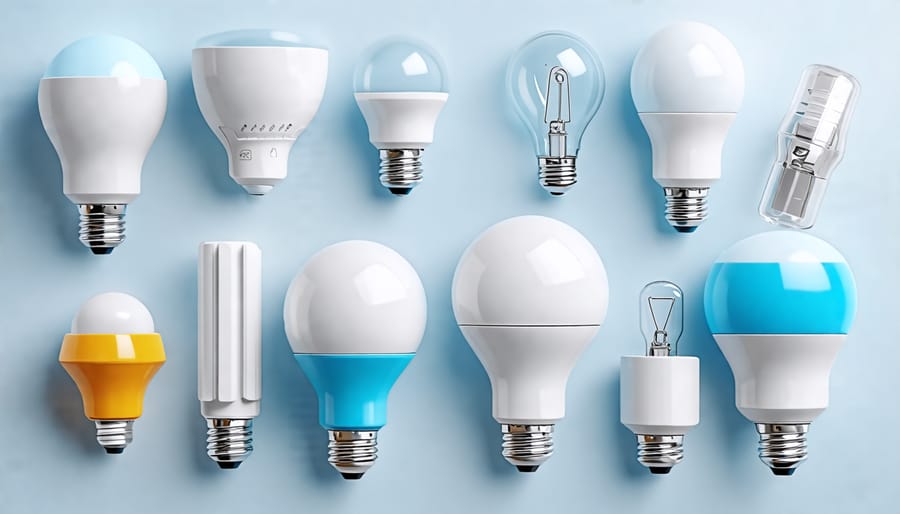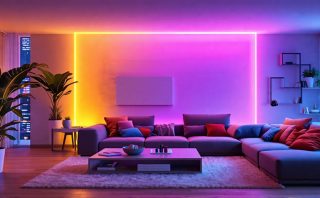Harness the power of Zigbee wireless technology to revolutionize your lighting control. Zigbee enables seamless communication between light fixtures, sensors, and controllers, creating a smart lighting ecosystem that enhances energy efficiency, convenience, and customization. With its mesh networking capabilities, Zigbee ensures reliable and robust performance, even in large-scale installations. Unlock the potential of intelligent lighting automation and experience unparalleled flexibility in creating personalized illumination scenes. Embrace the future of lighting control with Zigbee and transform the way you interact with your environment.
Understanding Zigbee Technology
Zigbee Protocol Basics
The Zigbee protocol is a low-power, wireless mesh networking standard designed for reliable, secure communication between smart devices. It operates on the IEEE 802.15.4 physical radio specification, utilizing the 2.4 GHz frequency band. Zigbee is capable of transmitting data over long distances by passing information through a mesh network of intermediate devices, extending the overall range of the system.
Key features of the Zigbee protocol include:
– Low power consumption, enabling devices to operate for extended periods on battery power
– Secure communication with AES-128 encryption
– Support for large networks with up to 65,000 nodes
– Self-healing mesh network architecture for increased reliability
– Interoperability between devices from different manufacturers
Zigbee’s low power consumption and robust networking capabilities make it an ideal choice for smart home applications, including lighting control systems, where reliable communication and energy efficiency are crucial factors.

Advantages over Other Wireless Protocols
Zigbee offers several advantages over other wireless protocols for lighting control. Unlike Wi-Fi, which can be prone to interference and congestion in high-density environments, Zigbee operates on a dedicated frequency band, ensuring reliable communication between devices. Compared to Bluetooth, Zigbee has a longer range and supports mesh networking, allowing for more extensive and flexible lighting setups. While Z-Wave is another popular smart home protocol, Zigbee is more energy-efficient and cost-effective for lighting applications. Zigbee’s low power consumption and ability to support a large number of devices make it an ideal choice for scalable, energy-saving lighting solutions in both residential and commercial settings. Additionally, Zigbee’s open standard allows for interoperability between devices from different manufacturers, giving users greater flexibility in choosing compatible lighting products.
Key Components of a Zigbee Lighting System
Zigbee-enabled Light Bulbs and Fixtures
Zigbee-enabled light bulbs and fixtures come in a wide variety of options to suit any lighting need. Smart LED lights are the most common, offering energy efficiency and long lifespans. These bulbs are available in various shapes, sizes, and color temperatures, from warm white to daylight. Zigbee-compatible dimmer switches and light strips provide customizable ambiance and convenience. For outdoor spaces, Zigbee-enabled flood lights and path lights offer automated illumination and security. Ceiling fans with integrated Zigbee lighting control allow for streamlined operation. Zigbee-ready lamps and fixtures, such as pendant lights, desk lamps, and wall sconces, seamlessly integrate into your smart home ecosystem. With an array of Zigbee lighting products on the market, it’s easy to find the perfect solution for your home or business, whether you prioritize energy savings, convenience, or style.

Zigbee Hubs and Controllers
Zigbee hubs and controllers serve as the central command for your Zigbee lighting system. They communicate with Zigbee-compatible light bulbs, switches, and sensors, allowing you to control your lights remotely using a smartphone app or voice commands. Popular options include the Samsung SmartThings Hub, Amazon Echo Plus, and Philips Hue Bridge. These devices connect to your home Wi-Fi network and act as a translator between your Zigbee devices and your phone or smart home assistant. Some smart home platforms, like Amazon Alexa and Google Home, have built-in Zigbee functionality, eliminating the need for a separate hub. When choosing a Zigbee hub or controller, consider factors such as compatibility with your existing devices, ease of setup, and the range of features offered. With the right hub or controller, you can easily manage your Zigbee lighting system and create personalized lighting scenes for any occasion.
Zigbee Apps and Integrations
Zigbee lighting control integrates seamlessly with popular smart home platforms like Amazon Alexa, Google Home, and Samsung SmartThings, enabling voice commands and automation routines. Dedicated apps, such as the Philips Hue app or the Sengled Home app, offer granular control over individual lights, groups, and scenes. These apps allow users to customize color temperature, brightness, and schedules, creating personalized lighting experiences for every occasion. Advanced features like geofencing and motion sensing can trigger lights automatically based on user presence or movement, enhancing convenience and energy efficiency. With a wide range of compatible apps and integrations, Zigbee lighting control offers unparalleled flexibility and customization options for any smart home setup.
Setting Up Zigbee Lighting Control
Planning Your Zigbee Lighting Layout
When planning your Zigbee lighting layout, consider the placement of devices to ensure optimal coverage and performance. Position your Zigbee hub centrally within your home or space for maximum signal strength. Avoid placing devices behind large metal objects or thick walls, as this can interfere with the mesh network. Aim to have each device within 30-50 feet of another for seamless communication. For larger spaces, use Zigbee repeaters to extend the network’s range. Keep in mind the number of devices connected to maintain a stable and responsive system.
Pairing Devices with Your Zigbee Hub
To pair your Zigbee-enabled bulbs and fixtures with the hub, first ensure they are powered on and within range. Open the app associated with your Zigbee hub and navigate to the device pairing section. The app will scan for nearby devices; when found, select the device you wish to add and follow the prompts to complete pairing. Some devices may require a manual pairing process, such as holding a button on the device until it blinks. Once paired, you can assign the device to rooms, create scenes, and control it remotely through the app. Repeat this process for each Zigbee device you want to connect to your hub.

Configuring Scenes, Schedules, and Automations
Configuring scenes, schedules, and automations with Zigbee lighting control empowers you to create the perfect ambiance for any occasion. With just a few taps on your smartphone or voice commands, you can set the mood for a cozy evening, lively party, or productive workday. Scenes allow you to group lights and preset their brightness, color, and temperature for instant recall. Schedules enable you to automatically turn lights on or off at specific times, saving energy and providing a sense of security. Automations take it a step further by triggering lighting changes based on other devices or conditions, such as motion sensors or the sun’s position. Unleash your creativity and enjoy a truly personalized lighting experience with Zigbee.
Real-World Applications
Residential Use Cases
In a typical home, Zigbee lighting control offers numerous benefits. With smart bulbs and sensors, lights can automatically turn on when entering a room and off when leaving, saving energy and increasing convenience. Dimming capabilities allow for customized ambiance, whether you’re relaxing, working, or entertaining. Zigbee-enabled under cabinet lighting in kitchens provides efficient task lighting while highlighting beautiful countertops. Outdoor Zigbee lighting enhances security and creates inviting spaces for gatherings. With app control and voice commands, adjusting your home’s lighting is effortless, making Zigbee an attractive choice for modern, connected living.
Commercial Applications
Zigbee lighting control offers significant benefits for commercial applications, making it an attractive choice for offices, retail stores, hotels, and more. With Zigbee, businesses can easily manage and automate their lighting systems, reducing energy consumption and costs. The wireless nature of Zigbee allows for flexible installation and scalability, making it ideal for large commercial spaces. Occupancy sensors and daylight harvesting capabilities further optimize energy usage by automatically adjusting light levels based on the presence of people and natural light. Additionally, Zigbee’s ability to integrate with building management systems enables centralized control and monitoring, simplifying maintenance and troubleshooting. By implementing Zigbee lighting control, commercial establishments can create comfortable, productive, and energy-efficient environments while enjoying long-term cost savings.
Conclusion
In conclusion, Zigbee lighting control offers a reliable and energy-efficient solution for smart home enthusiasts and businesses alike. By leveraging the power of mesh networking, Zigbee enables seamless communication between devices, allowing for easy control and customization of lighting. With its low power consumption and compatibility with a wide range of devices, Zigbee has become a popular choice for those looking to optimize their lighting systems. As technology continues to advance and more devices become Zigbee-enabled, the future of lighting control looks brighter than ever. Whether you’re a homeowner seeking convenience or a business owner aiming to reduce energy costs, Zigbee lighting control is a smart investment worth considering.





